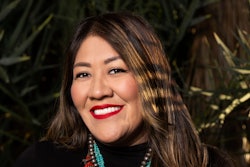For more than a million students each year, the college process starts with logging on to the Common App, the online application that can submitted to over 1,000 colleges and universities. But for about a quarter of those students, the process stops there: although they set up a student profile and begin working on at least one application, they ultimately don’t complete or submit any. Now, for the first time, this population of almost 300,000 is being studied, as researchers look for clues about how to get these students on to campuses.
“These folks have clearly shown some interest in college-going,” said Dr. Taylor Odle, an assistant professor of educational policy studies at the University of Wisconsin-Madison. “If you’re thinking about helping to equalize college enrollment, it may be easier to get them over the hurdle.”
 Dr. Taylor Odle, assistant professor of educational policy studies at the University of Wisconsin-Madison
Dr. Taylor Odle, assistant professor of educational policy studies at the University of Wisconsin-Madison
Non-submitters, Odle and Magouirk found, are no less ready for college than students who do apply. Their GPAs and standardized test scores are similar, as are their aspirations.
In terms of academic readiness, “non-submitters look just like submitters,” said Odle. “It’s not like this is a pool of students that’s ‘not college material,’ or couldn’t get into Common App institutions.”
However, the researchers found disparities in a variety of factors, including race and ethnicity, socioeconomic status, and education and career plans. Many of these disparities mirror gaps that show up later in enrollment and completion statistics.
Odle called the racial disparities “unfortunately unsurprising.” Non-submission rates were highest among Native American and Alaska Native students, as well as Native Hawaiians. Black and Hispanic students were overrepresented among non-submitters, and white students and Asians were underrepresented.




















